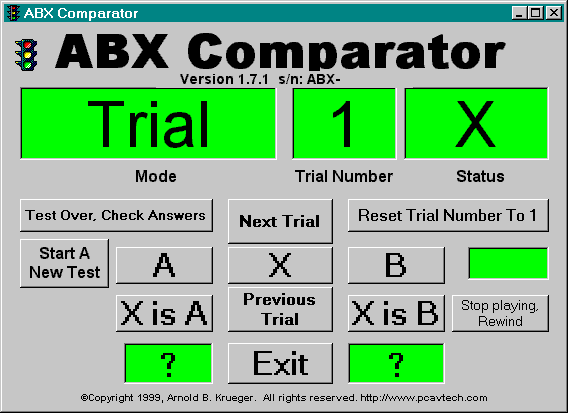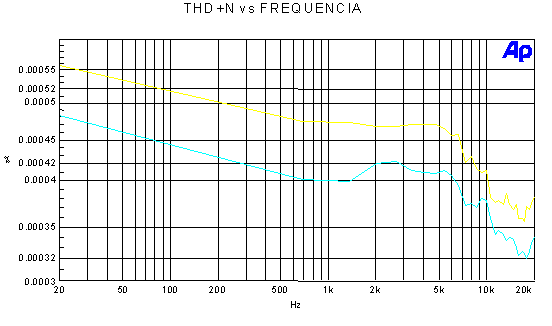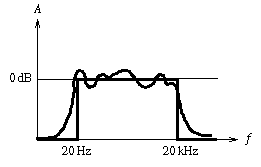The origins
First, for measuring the quality of a string of high fidelity were used ABX test: they are two audio sources A and B with one of them must be chosen by random X). It was first described by both the United States by Daniel J. Shanefield in November 1974 for testing amplifiers.
In this test the individual must recognize the differences sound, ignore the element that listens and one who prepares and executes the switching devices, do not know which aircraft it selects. They must answer without being influenced by visual stimuli such as brand, etc..
However, these tests must take into account other factors such as differential loudness, etc.. that can lead to an inclination for a particular device. For this reason the test protocol should include a process to balance what to test (voltage level, etc..) In order to reduce the factor of "choice by chance."
Total Harmonic Distortion vs frequency
The measure of the sound: Bels and Decibels
A good chain of Hi-Fi has a power of constant exit, of 20 Hz to 15000 Hz, that is to say that its graphic representation is almost a direct line, especially in the interval of the audible frequencies. This means that the chain amplifies all the sounds in correct proportions.
This amplification is measured in decibels, sometimes in larger units like bels (1 bel = 10 decibels (dB) is a logarithmic unit). This unit is very complex because it is the power output compared to other power level reference
Sound pressure level vs frequency
A baseline that can sometimes take to establish the decibel scale is the lowest sound power that can be played. There is a range of powers corresponding to the range of audible frequencies (20 to 20000Hz). The louder sound detected is 13 Bels. This power may seem relatively small, but this translates into a power associated with her, more than 10,000,000,000,000 times the lowest. You can use decibels to compare two current intensities, two voltages, two powers, two intensities of sound or two sound pressures. It is a measure of gain. If the device comprises several amplifiers, the total gain is the multiplication of individual gain, so the addition is logarithmic. Any top or slot in the curve resulting gain or loss in decibels.
The noise
Noise is unwanted sound through the earpiece. These are often very irregular signals, no music and no strengths.
A signal is composed of various signals, the fundamental frequency and harmonics. Plus a sound composed of harmonics is more faithful to its real and therefore it has a major quality. (See Fourier)
cutoff frecuency
For example we take the tone la:
The pitch of the oscillating at a frequency of 440Hz, we should get a sinusoid (upper right part of figure), yet it is a more distorted curve that is obtained (curve in bold upper left of the figure). In fact there is not that the 440Hz signal is issued. In addition to this signal, whose frequency is called fundamental frequency, there are a series of signals whose frequency is a multiple of the fundamental frequency. These signals are called harmonics, and it specifies the multiple of the fundamental frequency and the frequency of the harmonic 2 is equal to 2 times the frequency of the fundamental (lower left figure). The gap between two consecutive harmonics is called an octave. The amplitude of each harmonic depends on the instrument that generates sound. It thus receives the sum of all these signals with their respective amplitudes (upper left part of figure) and the curve is obtained by adding harmonics to the fundamental (curves in Fig upper left sum in bold). However harmonics may be outside the audio band so we could then remove a "normal ear" could not listen (a difference would be perceived by those who practice music) harmonics are taken as noise. That's what we did with mp3 encoding, we suppress the harmonics.
The sequence (the spectrum) formed by the amplitudes of successive harmonics of a sound determines what is called the timbre that characterizes each musical instrument
Decomposition in series of Fourier of an acoustic sign.
So, a good hi-fi is to separate the useful signals of the latter regarded as noise filters with very good way to gumming up the signal but remove those that interfere with signals (primarily that can not be heard by humans!).





